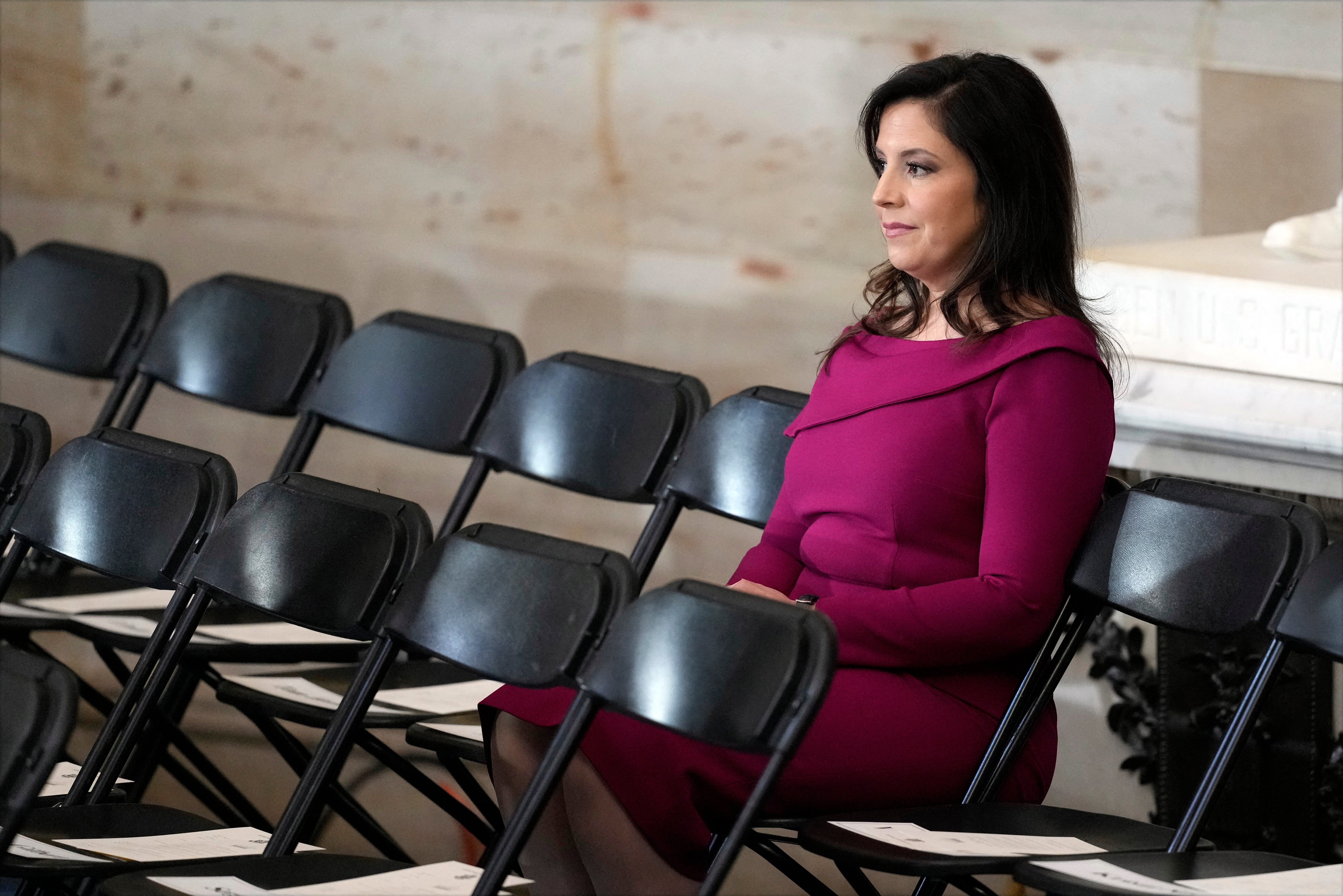President Donald Trump on Thursday threw Congress for a loop — and potentially a lifeline — to Speaker Mike Johnson when he announced he would pull New York Rep. Elise Stefanik’s nomination to serve as ambassador to the United Nations.
The move came so abruptly that The Independent informed Democratic Sen. Chris Murphy of Connecticut, who sits on the Senate Foreign Affairs Committee, about the sudden change of plans.
The switch was also somewhat poetic, given that Stefanik made a dramatic shift from being a moderate New York Republican who in 2014 became the youngest woman elected to Congress, to becoming a pro-Trump Republican who vigorously defended him during his first impeachment in the House.
Stefanik would later say on Fox News that she was “proud to be a team player, the president knows that.”
Trump specifically thanked Stefanik, but noted: “I don't want to take a chance on anyone else running for Elise's seat.”
For someone as self-confident as Trump, who has regularly said that his return to the White House ushered in a new “Golden Age of America,” it was a surprising admission, especially given the fact that Stefanik overwhelmingly won re-election in her seat in 2024.
But the GOP got a big shock earlier this week when a Democrat won a special election for a state senate seat in a Pennsylvania district that voted for Trump by 15 points.
And next week, Florida will hold two special elections: One in Florida’s 1st congressional district to replace Matt Gaetz, who resigned to become attorney general before his nomination flamed out; and another in Florida’s 6th congressional district to replace National Security Adviser Michael Waltz.
Republicans face no real danger of losing the race in the first district, given how bright red it is. But polling has shown a tighter race between Republican Randy Fine and Democrat Josh Weil in the 6th district. For context, Waltz won the seat when Ron DeSantis, the state’s arch-conservative governor, resigned to run for higher office.

As of right now, the GOP only has 218 seats, the exact magic number to have a majority in the body of 435, while Democrats have 213 seats due to the death of two members of their caucus.
This comes as Republicans begin the hard work of trying to pass Trump’s big domestic agenda spending bill, which would include extending the 2017 tax cuts he signed, ramping up spending at the border with Mexico, increasing military spending and drilling more for oil.
Republicans on Capitol Hill plan to accomplish this through a process called budget reconciliation, which allows them to avoid a filibuster from the Democrats and pass the bill with only 51 votes in the Senate.
But with such disparate parts within the GOP, both between the House and the Senate as well as internal disputes among Republicans in both chambers, they need almost complete uniformity.
Trump proved to be an effective whip this month when he got Republicans almost unanimously behind the stopgap spending bill that jammed the Democrats in the Senate and forced Senate Minority Leader Chuck Schumer to accept steep cuts.
He did it again a few weeks earlier when House Republicans looked like they would not be able to pass the budget resolution to begin the process of crafting their major domestic agenda package. Then, after some work, enough Republicans flipped less than half an hour before it looked like they needed to pack it in.
But the ideological differences within reconciliation might be more difficult to overcome.
Republicans in the Senate primarily want to focus on cutting taxes while Republicans in the House want to be serious about spending cuts in the bill. Specifically, the resolution requires the House Energy and Commerce Committee to find $880 billion in savings, which likely means Medicaid would be on the chopping block.
Some Republicans like Senator Josh Hawley of Missouri are resisting potential cuts to Medicaid given that they hail from states where a high number of their constituents use the health care program meant for low-income families, children and people with disabilities.
Then there are Republicans like Wisconsin Senator Ron Johnson, who want the cuts to go even further.
This inevitably will create a policy Rubik’s Cube that Trump, Johnson and Senate Majority Leader John Thune will have to navigate.
With the clock running out until the midterms, they have a limited amount of time to do so. If it meant denying Stefanik — who, like Vice President JD Vance, underwent a drastic change to have a future in the GOP — a cushy gig at the United Nations to succeed so be it.
Trump moves to officially close USAID, tells employees their jobs will be eliminated
Here’s how much Trump may slash the workforce in various agencies
Trump says the US will help in Asia quake. A former official says the system is now in 'shambles'
Hegseth and Waltz’s leaked passwords ‘found online’ in aftermath of Signalgate
Tufts student had asthma attack after ICE arrest, attorneys say
Trump admin offers Voice of America employees buyouts as judge looks to spare network







